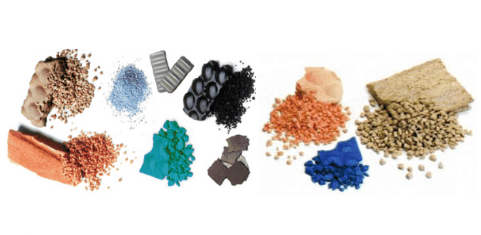What are the types of material mixing?
Material mixing refers to the homogenization of one or more materials to reduce or eliminate the uneven distribution of particle size, density, temperature and plasticity. It is a common material processing method.

1. The mixing method of materials can be classified from different perspectives:
1.1 From the continuity of mixing time, it can be divided into two methods:
Continuous mixing
Intermittent mixing
1.2 From the mixing mechanism, it can be divided into three categories:
Diffusion mixing
Convective mixing
Shear mixing
*Usually these several mixing mechanisms work at the same time
1.3 From the type of mixed raw materials, it can be divided into two types:
Multi-component material mixing
Single-component material mixing
1.4 From the structure of mixers, it can be divided into three types:
Horizontal mixing
Vertical mixing
Pouring mixing
1.5 From the mixing formation mechanism, it can be divided into two categories:
Gravity mixing —— that mainly depends on the diffusion of material flow to mix, such as cylinder mixer
Forced mixing —— that is the mainstream product which is forced to mix with various stirring tools. The mixing quality is good, and it is less affected by the particle size, shape, density, water content and fluidity of the material.
2. According to the different structural characteristics of the mixing parts, it can be divided into the following ways:
2.1 Rolling and mixing
Mixing method: the rolling wheel and scraper are used for rolling and mixing
Advantage: having the functions of crushing and plasticizing at the same time
2.2 Propeller or paddle mixing
Mixing method: using intermittent spiral, ribbon or stirring blade
Disadvantage: the mixing uniformity is generally not very good during continuous discharge
2.3 Shovel mixing
Mixing method: mostly using the vertical structure, the shovel blades are arranged in multiple directions
Advantage: good mixing uniformity
Apply to: intermittent mixing
2.4 Cylinder mixing
Mixing method: using the horizontal cylinder rotary mixing is used
Apply to: mixing of bulk materials that do not require very high mixing
2.5 Planetary mixing
Mixing method: the planetary principle
Advantage: good mixing uniformity
Apply to: rapid mixing of materials that require high uniformity and are prone to agglomerating
2.6 Multi-axis mixing
Mixing method: using multiple stirring shafts
Advantage: good mixing effect
Disadvantage: the complicated structure and the large power consumption




